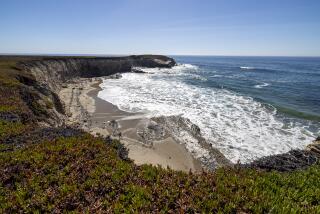U.S. Agency OKs Search for Oil in Fla. Preserve
- Share via
WEST PALM BEACH, Fla. — A proposal to search for oil in the Big Cypress National Preserve by detonating dynamite in 14,700 holes and drilling an 11,800-foot exploratory well has won initial approval from the National Park Service.
An environmental assessment issued Monday includes dozens of stipulations intended to protect marshes, forests and wildlife within the 729,000-acre preserve that is a watershed for the Everglades and a home to the endangered Florida panther.
Collier Resources Co. still needs approval from the park service regional director in Atlanta, the Army Corps of Engineers and the state.
The company’s plans include drilling the holes in a 41-square-mile grid and detonating small charges of dynamite 25 feet underground in each of them to record sound waves and look for oil. Collier Resources also wants to build a 7 1/2-mile access road in the preserve.
Environmentalists contend seismic testing, drilling and more roads, pipelines and culverts would harm the panthers, alligators, black bears, wading birds and dozens of protected species inside the preserve.
“There’s no better way to protect Big Cypress than to just not drill,” said Shannon Estenoz of the World Wildlife Fund.
The Sierra Club’s Roderick Tirrell said he’s concerned about potential environmental damage caused by the access road, which could alter water flows southeast into the Everglades.
“It’s unfortunate because we’re spending so much money to restore the Everglades,” he said. “We feel that [Big Cypress] is a crucial watershed because the eastern water is so mired in pollution, drainage and development runoff.”
Bob Duncan, Collier Resources general manager, said the company believes additional drilling won’t affect wildlife.
The Collier family retained the mineral rights to their land when they sold it to the federal government for the preserve in the 1970s. The government allows oil drilling as long as it doesn’t harm the preserve.
The company draws about 2,200 barrels of crude oil daily from two well fields at opposite ends of the preserve. More than 110 million barrels have been extracted to date.
More to Read
Sign up for Essential California
The most important California stories and recommendations in your inbox every morning.
You may occasionally receive promotional content from the Los Angeles Times.













